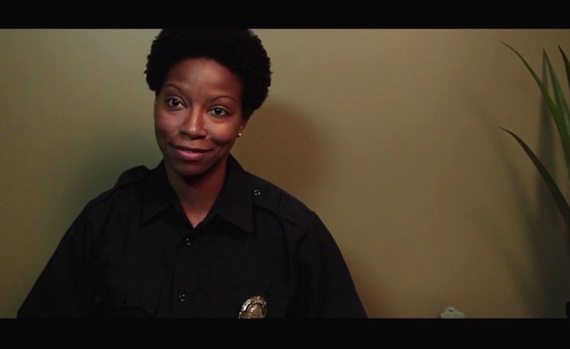I'm not an activist. Like many folks, I don't have the fortitude to face off with tear gas and crowds in riot gear, but I have boundless respect for those that can. I stay informed of the news but have a healthy mistrust of mainstream media, and despite voting regularly I'll likely always be skeptical of the political process.
Early on, as a college member of the NAACP and the Black Student Union, engaging in protests, voter registration drives and volunteerism of every kind, I learned that the need to cock my brow, speak freely and be what could only be described as "uppity" probably wouldn't make me well-suited to community organizing.
And recently, in the wake of outrage over Ferguson, Tamir Rice, Eric Garner and countless other cases of injustice over "unarmed deaths," traditional activism didn't seem like enough. On one hand, mass die-ins across the country, economic boycotts and the physical presence of protesters in the streets have been effectively raising awareness and empowering a new generation of leaders. Anyone who says that young people are apathetic simply hasn't been paying attention. But for me, I wanted to focus not only on current injustice; I wanted to think about the future.
Luckily, I'm not an activist. I'm a writer. So I reached out to content creator Issa Rae and shared some ideas. And instead of calling me wrong-headed and insane, she agreed with pouring those ideas and a healthy dose of black outrage into a satirical sketch called 'Protect and Serve.'
The sketch looks at what policing might be like in the not-too-distant future, and more importantly, what we want it to be. Police body cameras are an important part of that, but just as essential is the way that the footage is used and interpreted. The sketch envisions a world where technology helps curb human error; it's a world where mistakes and even corruption still exist, but the difference is in how those things are handled.
This week, ABC's Scandal dealt with many of the same topics of police violence. A scene where justice comes to a father who has lost his son is one of the most compelling in the episode, but it's also one of the most fictitious. If there's anything that the 24-hour news cycle has taught us, it's that there have been too many cases of police brutality where no such justice is served.
Scandal showrunner Shonda Rhimes tweeted that, "In the end, we went with showing what fulfilling the dream SHOULD mean. The idea of possibility."
And therein is the trick. There isn't a single, sweeping solution to police violence in this country. But what I know for sure is that it takes all of us to find solutions. And that begins with possibility.
Ryan Coogler's Blackout for Human Rights initiative stepped up as a supportive partner.
